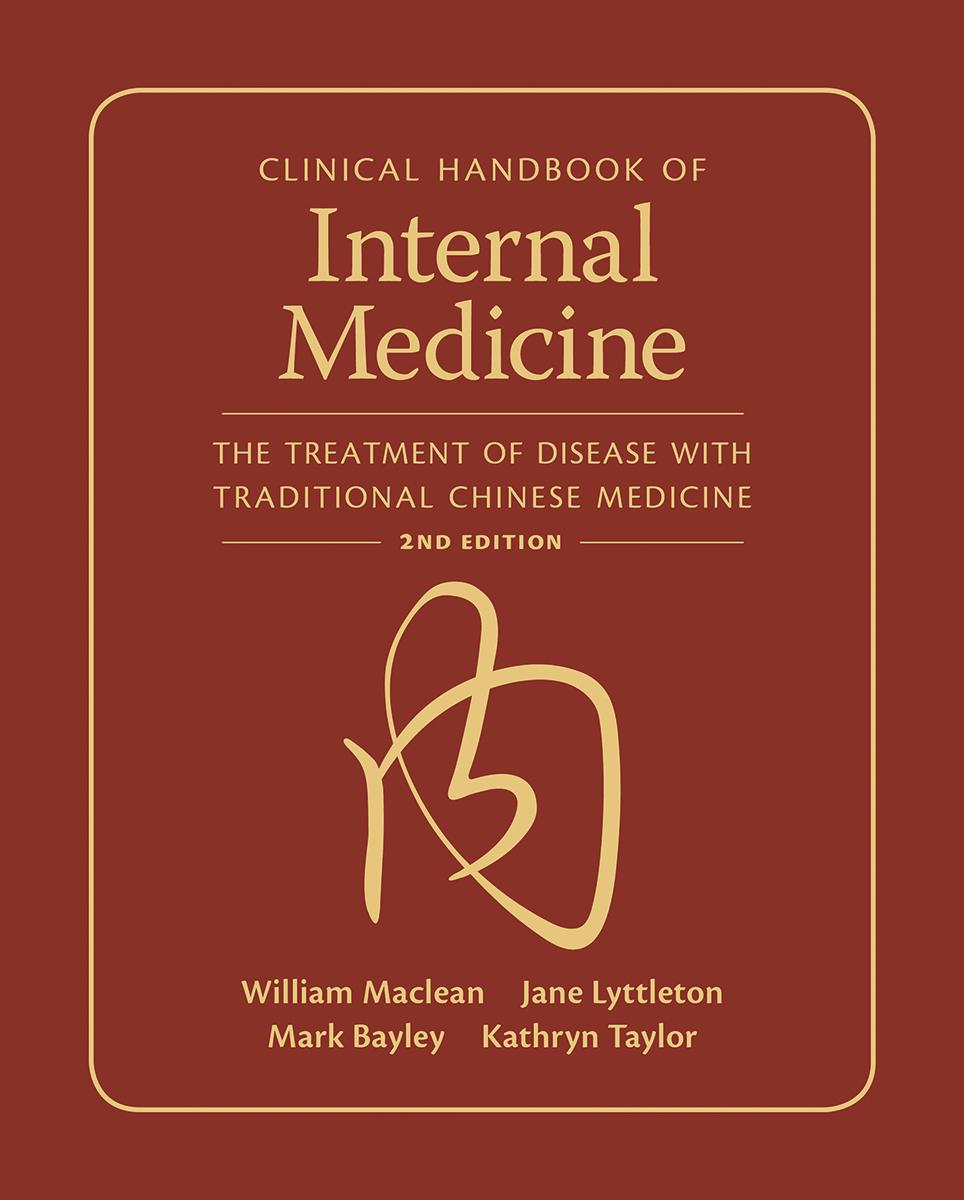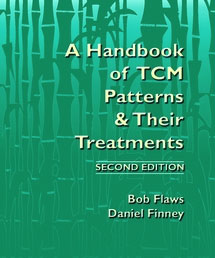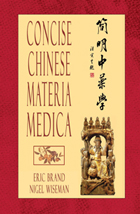Pathomechanisms of the Five Viscera – 5 Volume Set
Heart, Kidney, Liver, Lung, Spleen
- Verlag: Blue Poppy Press
- ISBN: 9786546313152
- 2009, 350 pages
199,99 €
inkl. MwSt.
plus Versandkosten
Abhängig von der Lieferadresse kann die MwSt. an der Kasse variieren.
Lieferzeit: ca. 5 - 10 Tage/days
Beschreibung
In modern China, pathomechanisms have become a major focus of Chinese medical literature and education.
Up to now, relatively little of this material has been transmitted to the West, and consequently many practitioners have failed to go beyond pattern diagnosis to examine the underlying disease process that produces the patterns.
Thus, pathomechanisms are often described as a missing link in a Westerners Chinese medical education.
Paradigm’s new series of texts devoted to pathomechanisms alows practitioners to advance their knowledge and reap the rewards of greater clinical success.
This outstanding series on the five viscera goes into fine detail concerning the yin-yang and 5-phase basis of diagnostic and therapeutic guideposts for understanding diseases and how to treat them.
Written by a distinguished Chinese physician, and expertly translated into English by Sabine Wilms, it also contains the full Chinese text, which makes it ideal for professors who need to see how source material is accurately translated from Chinese into English, and for intermediate and advanced level students who desire to grasp an understanding of Chinese medical language. Additionally, the succinct and well-chosen quotations from the classics and treasured literature of Chinese medical tradition are cited throughout each volume, allowing the reader luminous insights into the elegance and simplicity of pattern-based diagnosis and treatment.
Pathomechanisms of the Heart:
The first section of this text discusses repletion conditions of the heart, including qi stagnation, phlegm obstruction, blood stasis, heart repletion cold, heart repletion heat, dampness encumbering the heart, and water assailing the heart.
The second section details vacuity conditions, including vacuity of heart qi, heart yang, heart blood, and heart yin. Each pathomechanism is described in detail with references to its historical development, then further differentiated by the specific etiological factors. Each subsection discusses the origins and development of ideas relevant to this pathology, then gives the various symptoms, treatment strategies, and specific formulas, often with modifications to address the particular symptoms more directly. It is here that the author offers a review of relevant literature, spanning the entire range of traditional medical literature beginning with the early classics. For each text, he gives the specific quotations and then paraphrases and explains it. This provides the reader a sense of the historical evolution as well as the various clinical perspectives on each pathomechanism. At the conclusion of each section, the author summarizes the information in a useful table that differentiates again by etiology and then lists specific symptoms in each case. Pathomechanisms of the Heart also contains a section on modern research, a Chinese-English bibliography in alphabetical order (with both classical texts and journal articles on modern research) and a Chinese
Pathomechanisms of the Kidney:
Pathomechanisms of the Kidney describes the repletion conditions of the kidney, including kidney-channel wind-cold, wind-heat, wind-damp, cold-damp, damp-heat, repletion fire, static blood, phlegm turbidity, stones in the kidney channel, and kidney channel qi stagnation. The second section presents vacuity conditions, including vacuity of kidney yang, of kidney qi, and of kidney yin, insufficiency of kidney essence, dual vacuity of kidney yin and kidney yang, and kidney vacuity verging on desertion. Each pathomechanism is described in detail with references to its historical development, then further differentiated by the specific etiological factors. Each subsection discusses the origins and development of ideas relevant to this pathology, then gives the various symptoms, treatment strategies, and specific formulas, often with modifications to address the particular symptoms more directly. It is here that the author offers a review of relevant literature, spanning the entire range of traditional medical literature beginning with the early classics. For each text, he gives the specific quotations and then paraphrases and explains it. This provides the reader a sense of the historical evolution as well as the various clinical perspectives on each pathomechanism. At the conclusion of each section, the author summarizes the information in a useful table that differentiates again by etiology and then lists specific symptoms in each case. The appendices include a section on modern research, a Chinese-English bibliography in alphabetical order (with both classical texts and journal articles on modern research) and a Chinese bibliography organized by stroke number.
Pathomechanisms of the Liver:
Pathomechanisms of the Liver describes repletion conditions of the liver, including liver qi depression, crosswise counterflow of liver qi, counterflow ascent of liver qi, downpour of liver qi, and evil scurrying in the sinews.
It also presents liver vacuity conditions, including vacuity of liver blood, liver yin, liver qi, and liver yang. Each pathomechanism is described in detail with references to its historical development, then further differentiated by the specific etiological factors. Each subsection discusses the origins and development of ideas relevant to this pathology, then gives the various symptoms, treatment strategies, and specific formulas, often with modifications to address the particular symptoms more directly. It is here that the author offers a review of relevant literature, spanning the entire range of traditional medical literature beginning with the early classics. For each text, he gives the specific quotations and then paraphrases and explains it. This provides the reader a sense of the historical evolution as well as the various clinical perspectives on each pathomechanism. At the conclusion of each section, the author summarizes the information in a useful table that differentiates again by etiology and then lists specific symptoms in each case. The appendices include a section on modern research, a Chinese-English bibliography in alphabetical order (with both classical texts and journal articles on modern research) and a Chinese bibliography organized by stroke number.
Pathomechanisms of the Lung:
Pathomechanisms of the Lung discusses repletion conditions of the lung, including impaired diffusion of the lung, impaired depurative downbearing of the lung, and impaired diffusion and downbearing of the lung.
The second section presents vacuity conditions, including vacuity of lung qi, lung yang, lung yin, and lung blood. Each pathomechanism is described in detail with references to its historical development, then further differentiated by the specific etiological factors. Each subsection discusses the origins and development of ideas relevant to this pathology, then gives the various symptoms, treatment strategies, and specific formulas, often with modifications to address the particular symptoms more directly. It is here that the author offers a review of relevant literature, spanning the entire range of traditional medical literature beginning with the early classics. For each text, he gives the specific quotations and then paraphrases and explains it. This provides the reader a sense of the historical evolution as well as the various clinical perspectives on each pathomechanism. At the conclusion of each section, the author summarizes the information in a useful table that differentiates again by etiology and then lists specific symptoms in each case. The appendices include a section on modern research, a Chinese-English bibliography in alphabetical order (with both classical texts and journal articles on modern research) and a Chinese bibliography organized by stroke number.
Pathomechanisms of the Spleen:
Pathomechanisms of the Spleen provides a thorough glimpse into the various manifestations of spleen disease in Chinese medicine.
Part 1 discusses repletion conditions of the spleen, including spleen qi depression, thought and preoccupation stagnating in the spleen, cold-damp encumbering the spleen, phlegm turbidity obstructing the spleen, food and drink damaging the spleen, and static blood accumulating in the spleen – and spleen fire (yang) exuberance – including spleen channel repletion fire and damp-heat brewing in the spleen. The second section presents vacuity conditions, including vacuity of spleen qi, spleen yang, and spleen yin. Each pathomechanism is described in detail with references to its historical development, then further differentiated by the specific etiological factors. Each subsection discusses the origins and development of ideas relevant to this pathology, then gives the various symptoms, treatment strategies, and specific formulas, often with modifications to address the particular symptoms more directly. It is here that the author offers a review of relevant literature, spanning the entire range of traditional medical literature beginning with the early classics. For each text, he gives the specific quotations and then paraphrases and explains it. This provides the reader a sense of the historical evolution as well as the various clinical perspectives on each pathomechanism. At the conclusion of each section, the author summarizes the information in a useful table that differentiates again by etiology and then lists specific symptoms in each case. The appendices include a section on modern research, a Chinese-English bibliography in alphabetical order (with both classical texts and journal articles on modern research) and a Chinese bibliography organized by stroke number.
Autor





